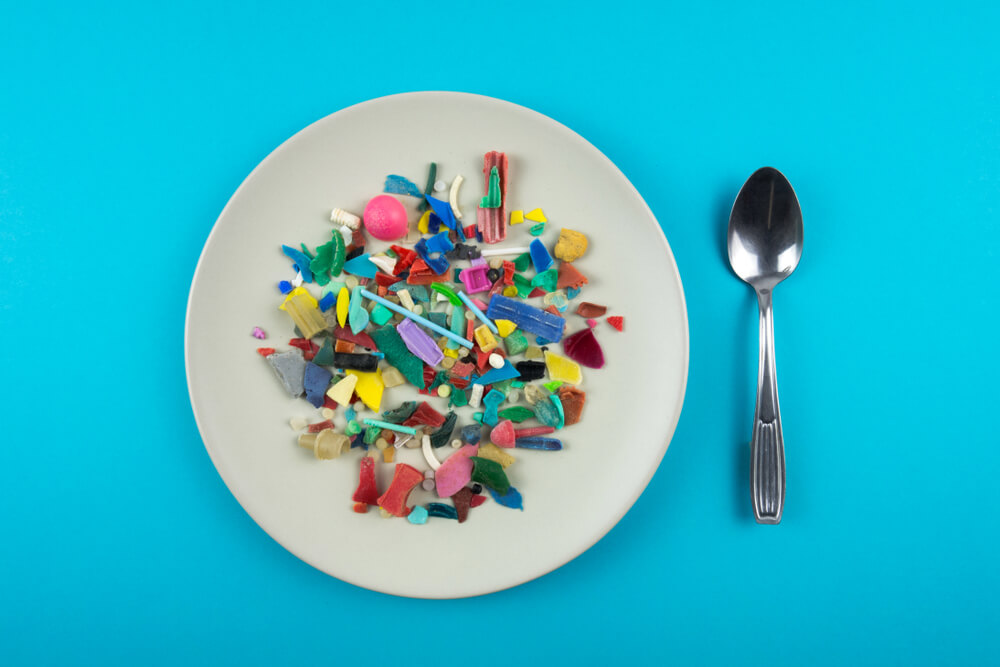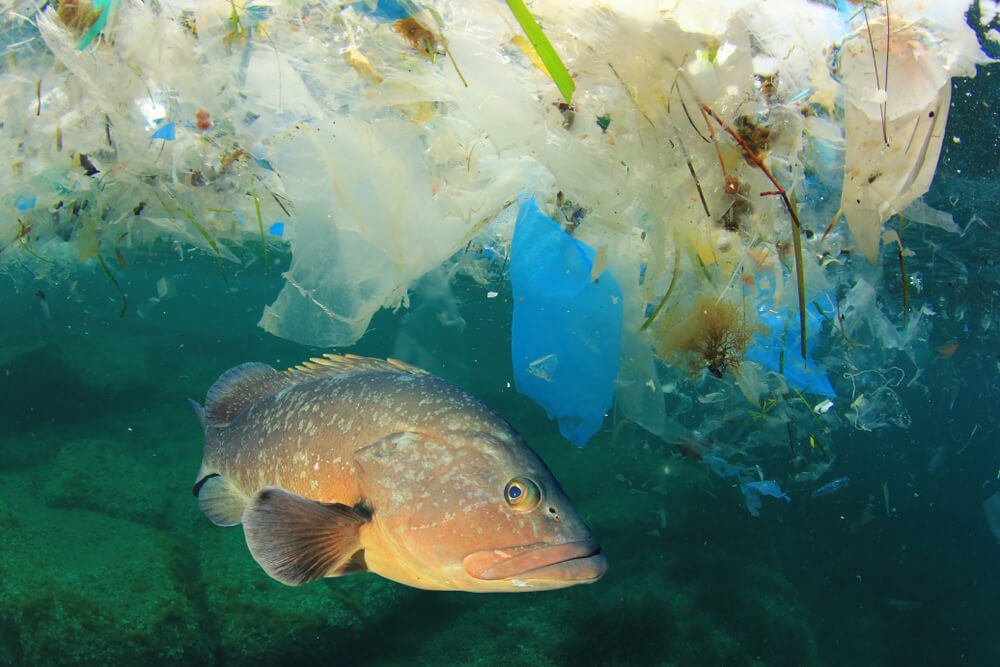Modern children consume a catastrophic amount of microplastics: research
A lot of microplastics found in children's feces, reports Wiredbased on the results of a recent study.

Photo: Shutterstock
Whenever a plastic bag or bottle decomposes, it disintegrates into smaller and smaller pieces that make their way into the nooks and crannies of the environment.
When you wash synthetic fabrics, tiny plastic fibers break off and flow into the sea. When you drive your car, plastic pieces fly off your tires and brakes. That's why literally everywhere scientists look, they find microplastics—pieces of synthetic material less than 5 millimeters long.
They are found on the most remote mountain peaks and in the deepest oceans. They are carried by the wind over great distances to pollute once pristine regions such as the Arctic. In 11 protected areas in the western United States, 120 million shredded plastic bottles fall from the sky every year.
And now microplastics are coming out of babies. In a pilot study published today, scientists describe how they looked at dirty baby diapers and found an average of 36 nanograms of polyethylene terephthalate (PET) per gram of feces, 000 times more than adult feces. They even found it in the first feces of newborns.
PET is an extremely common polymer known as polyester and is used in clothing and to make plastic bottles. The discovery comes a year after another team of researchers estimated that hot formula in plastic bottles severely degrades the material, exposing babies to several million microplastic particles a day, and possibly nearly a billion a year.
Although adults are larger, scientists believe that in some ways, infants are more exposed. In addition to drinking from bottles, babies can ingest microplastics in a dizzying array of ways. They have a habit of putting everything in their mouth - plastic toys of all kinds, but they also chew on fabric.
The microplastic that stands out from synthetic textiles is more specifically known as microfiber, but it is still plastic. Baby food is wrapped in disposable plastic. Children drink from plastic cups and eat from plastic plates. The carpets they crawl over are often made of polyester. Even hardwood floors are coated with polymers that release microplastics. Any of these can form tiny particles that children breathe or swallow.
Household dust is also becoming a major route of exposure to microplastics, especially for babies. The air in the room is completely unsuitable for them; you can inhale tens of thousands of particles every year. Several indoor studies have shown that 10000 microfibers can land on one square meter of surface every day in a typical household - floors, clothes, sofas, and sheets. Babies spend much of their time crawling on the floor, picking up loose fibers and tossing them into the air.
On the subject: The planet explodes from the inside: due to global warming, gas flares up in the bowels of the Earth
"Unfortunately, in modern lifestyles, babies are exposed to so many different influences that we don't know what effect they might have later in life," says Kurunthachalam Kannan, an environmental health scientist at the New York University School of Medicine and co-author of the new article, which is published in the journal Environmental Science and Technology Letters.
The researchers collected dirty diapers from six one-year-old children and ran the feces through a filter to collect microplastics. They did the same with three samples of meconium—a newborn's first stool—and stool samples from 10 adults. In addition to analyzing the samples for PET, they also looked for polycarbonate plastic, which is used as a lightweight alternative to glass, such as in eyeglass lenses. To make sure they were only counting microplastics that came from babies' intestines and not from their diapers, they excluded the plastic the diapers were made from: polypropylene, a polymer different from polycarbonate and PET.
Overall, PET concentration was 10 times higher in infants than in adults, while polycarbonate levels were more even between the two groups. The researchers found lower amounts of both polymers in meconium, suggesting that babies are born with the plastic already present in their bodies. This echoes previous studies that found microplastics in the human placenta and meconium.
What all this means for human health—and, more importantly, for the health of children—scientists are now racing to find out.
According to a recent study by scientists from ETH Zürich in Switzerland, different types of plastics can contain any of at least 10 different chemicals, a quarter of which cause negative effects in humans.
These additives serve all types of plastics, for example to provide flexibility, extra strength or UV protection, which degrades the quality of the material.
Microplastics can contain heavy metals such as lead, but they also tend to accumulate heavy metals and other pollutants when released into the environment. They also easily grow the microbial community of viruses, bacteria and fungi, many of which are pathogens to humans.
Of particular concern is the class of endocrine disrupting chemicals, or EDCs, that disrupt hormones and are associated with reproductive, neurological and metabolic problems such as increased obesity. The infamous plastic ingredient bisphenol A, or BPA, is one such EDC that has been linked to various types of cancer.
“We should be concerned because EDCs in microplastics have been shown to be associated with several adverse outcomes in human and animal studies,” says Jodi Flos, a reproductive toxicologist at the University of Illinois at Urbana-Champaign who led the 2020 study. “Some microplastics contain chemicals that can interfere with the normal functioning of the endocrine system.”
Infants are especially vulnerable to EDC because their bodies depend on a healthy endocrine system for development. “I firmly believe that these chemicals do affect the early stages of life,” Kannan says. “This is a vulnerable period.”
This new study adds to growing evidence that infants are exposed to high levels of microplastics. “This is a very interesting paper with very alarming numbers,” says University of Strathclyde microplastics researcher Deonie Allen, who was not involved in the study. “We need to look at everything that affects a child, not just his bottles and toys.”

Photo: Shutterstock
Because babies excrete microplastics in their feces, this means that the intestines can absorb some of the particles, like nutrients from food. This is known as translocation: especially small particles can pass through the intestinal wall and into other organs, including the brain.
The researchers actually demonstrated this in carps by feeding them plastic particles that travel through the intestines and into the head, where they cause brain damage, which manifests itself in behavioral problems: Compared to control fish, fish with plastic particles in the brain were less active and ate more slowly. ...
But this was done with very high concentrations of particles and with completely different species. While scientists know that EDCs are bad news, they don't yet know what level of exposure to microplastics can cause problems in the human body. “We need a lot more research to confirm the doses and types of chemicals in microplastics that lead to adverse effects,” says Flos.
You may be interested in: top New York news, stories of our immigrants and helpful tips about life in the Big Apple - read it all on ForumDaily New York.
Meanwhile, microplastics researchers say it is possible to limit children's exposure to the particles. Don't prepare baby formula with hot water in a plastic bottle - use a glass bottle and pour the formula into a plastic bottle once the liquid reaches room temperature.
Vacuum and sweep to keep microfibers free. Avoid plastic wrappers and containers whenever possible. Microplastic has polluted every aspect of our lives, so while it never gets rid of it, you can at least reduce its impact on your family.
Read also on ForumDaily:
The planet explodes from the inside: due to global warming, gas flares up in the bowels of the Earth
Facebook has one of the biggest disruptions in history: what caused it
Damages the nervous system: lead is found in the blood of half of US children
Do you want more important and interesting news about life in the USA and immigration to America? — support us donate! Also subscribe to our page Facebook. Select the “Priority in display” option and read us first. Also, don't forget to subscribe to our РєР ° РЅР ° Р »РІ Telegram and Instagram- there is a lot of interesting things there. And join thousands of readers ForumDaily New York — there you will find a lot of interesting and positive information about life in the metropolis.











